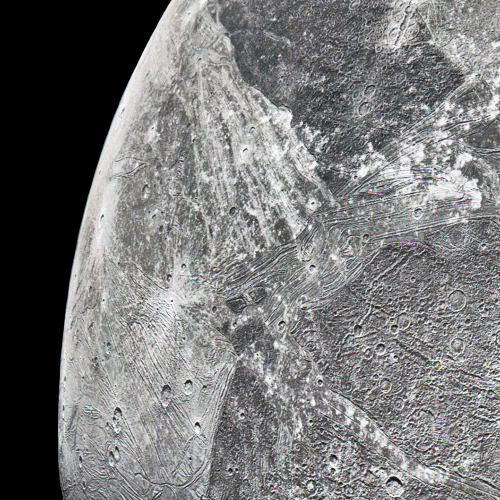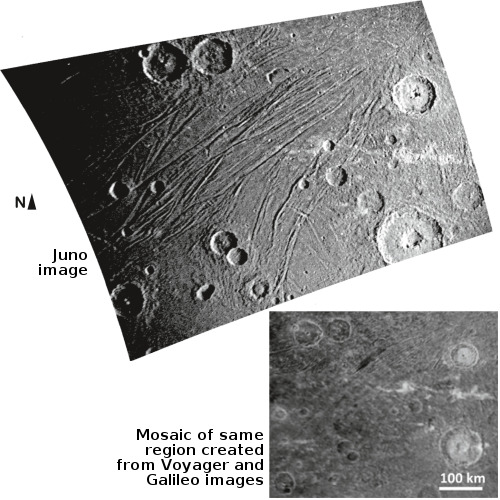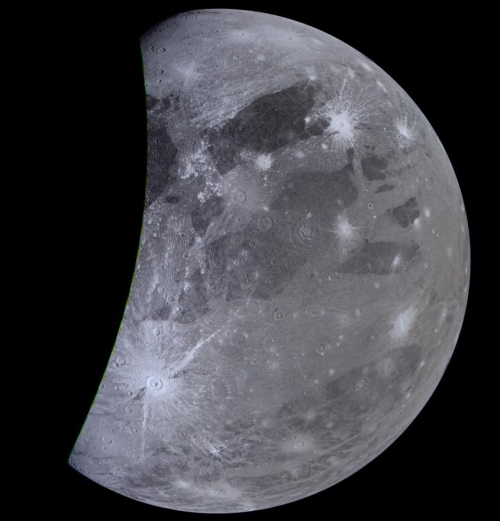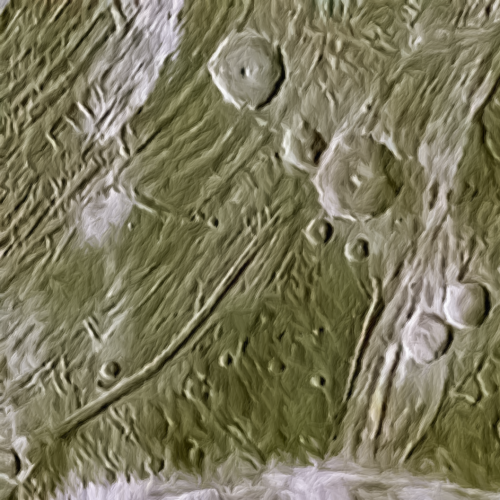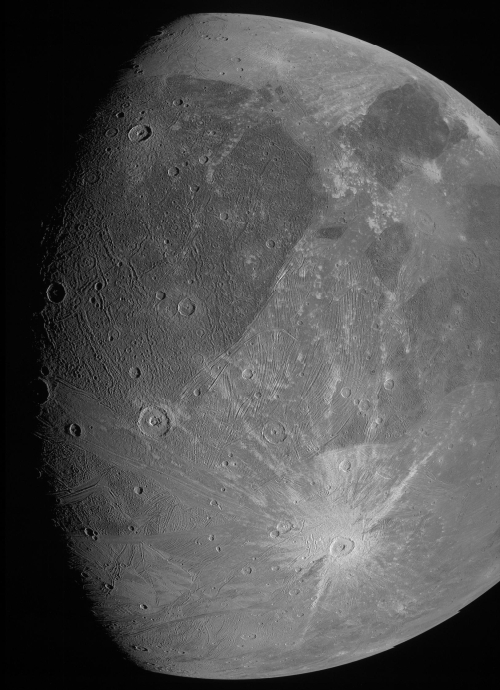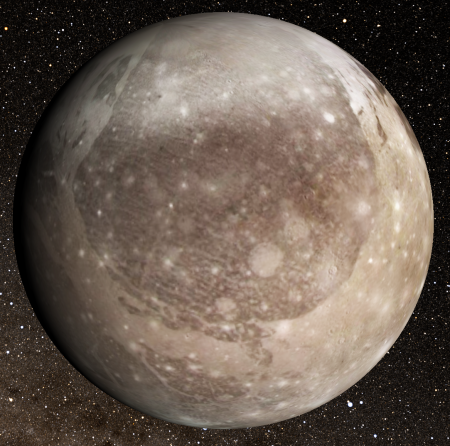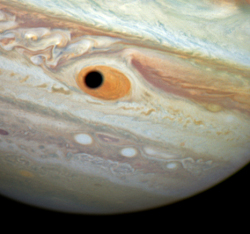Scientists detect salts and carbon-based molecules on Ganymede
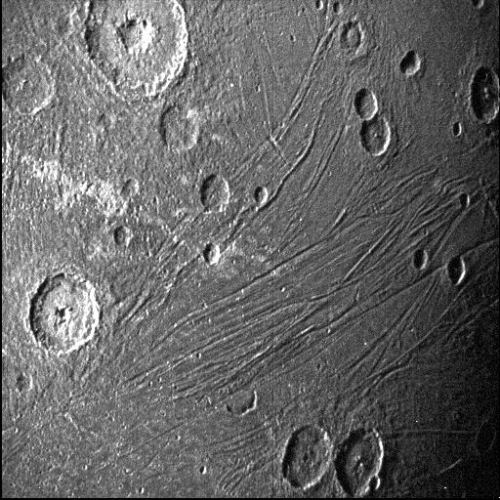
A close-up image taken during the June 7, 2021
Juno fly-by of Ganymede Click for original image.
Using data obtained during a close fly-by of Ganymede by Juno in June 2021, scientists have detected evidence of salts and organic carbon-based molecules.
On June 7, 2021, Juno flew over Ganymede at a minimum altitude of 650 miles (1,046 kilometers). Shortly after the time of closest approach, the JIRAM instrument acquired infrared images and infrared spectra (essentially the chemical fingerprints of materials, based on how they reflect light) of the moon’s surface. Built by the Italian Space Agency, Agenzia Spaziale Italiana, JIRAM was designed to capture the infrared light (invisible to the naked eye) that emerges from deep inside Jupiter, probing the weather layer down to 30 to 45 miles (50 to 70 kilometers) below the gas giant’s cloud tops. But the instrument has also been used to offer insights into the terrain of moons Io, Europa, Ganymede, and Callisto (known collectively as the Galilean moons for their discoverer, Galileo).
The JIRAM data of Ganymede obtained during the flyby achieved an unprecedented spatial resolution for infrared spectroscopy – better than 0.62 miles (1 kilometer) per pixel. With it, Juno scientists were able to detect and analyze the unique spectral features of non-water-ice materials, including hydrated sodium chloride, ammonium chloride, sodium bicarbonate, and possibly aliphatic aldehydes.
The data indicated that the salts and organics were most concentrated in Ganymede’s equatorial regions, which are less impacted by Jupiter’s strong magnetic field. The scientists think these materials originally came from the brine of an underground ocean that somehow reached the surface, though this hypothesis remains unconfirmed.

A close-up image taken during the June 7, 2021
Juno fly-by of Ganymede Click for original image.
Using data obtained during a close fly-by of Ganymede by Juno in June 2021, scientists have detected evidence of salts and organic carbon-based molecules.
On June 7, 2021, Juno flew over Ganymede at a minimum altitude of 650 miles (1,046 kilometers). Shortly after the time of closest approach, the JIRAM instrument acquired infrared images and infrared spectra (essentially the chemical fingerprints of materials, based on how they reflect light) of the moon’s surface. Built by the Italian Space Agency, Agenzia Spaziale Italiana, JIRAM was designed to capture the infrared light (invisible to the naked eye) that emerges from deep inside Jupiter, probing the weather layer down to 30 to 45 miles (50 to 70 kilometers) below the gas giant’s cloud tops. But the instrument has also been used to offer insights into the terrain of moons Io, Europa, Ganymede, and Callisto (known collectively as the Galilean moons for their discoverer, Galileo).
The JIRAM data of Ganymede obtained during the flyby achieved an unprecedented spatial resolution for infrared spectroscopy – better than 0.62 miles (1 kilometer) per pixel. With it, Juno scientists were able to detect and analyze the unique spectral features of non-water-ice materials, including hydrated sodium chloride, ammonium chloride, sodium bicarbonate, and possibly aliphatic aldehydes.
The data indicated that the salts and organics were most concentrated in Ganymede’s equatorial regions, which are less impacted by Jupiter’s strong magnetic field. The scientists think these materials originally came from the brine of an underground ocean that somehow reached the surface, though this hypothesis remains unconfirmed.

